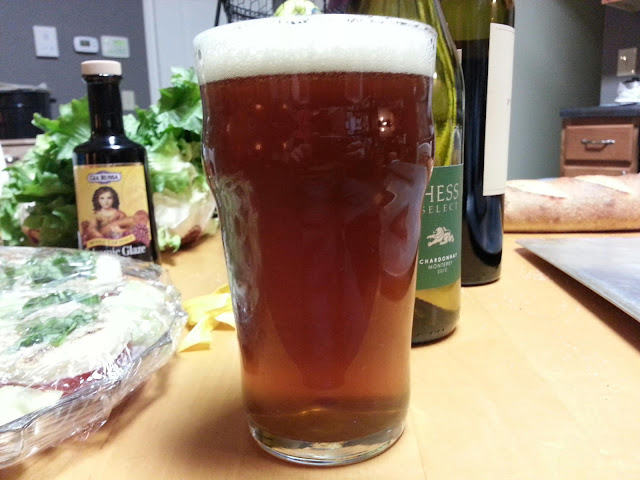Appearance - Macro commercial beer quality clarity and color. Perhaps a little bit more golden than a pale BMC lager. Though it didn't have a nice pop when the bottle was cracked open, the carbonation is spot on and there are plenty of bubbles rising from the bottom. The head pours two fingers thick and dissipates in about a minute. It is paper white. A tight layer of foam clings to the top throughout.
Smell - Not much. A hint of sulphur from the Cal Lager yeast. A faint smell of sugary corn flakes. Slight earthy aroma from the Saaz hops.
Taste - The best way that I can describe it is it tastes like my first beer. It has the characteristics of a macro beer, but more pronounced. It's very clean. It's got just the right amount of bitterness to it to balance the simple malt body. I taste a slight hint of corn flakes and then a rush of crisp malt, slight nutty flavor and finally just hint of breadiness.
Mouthfeel - A bit watery, but appropriate for the style. Has a nice crispness to it. It definitely leans more to the lager side on mouthfeel. It leaves your mouth feeling bubbly. I think carbonation is essential to keeping it from tasting like a watery commercial lager. The corn definitely does something distinct as well.
Drinkability - High. I could drink a lot of these. They're light and refreshing, but still full of flavor. It's got just enough complexity to keep it interesting AND you could definitely put down a couple of them easily. A great casual beer. It's going to join my Kölsch as a staple summer beer and will probably rival it at the tap.
I'd like to experiment with dry hopping it with a citrusy hop variety. I've got some Calypso that I think I'll try on this one.
I'm also really impressed with how the Cal Lager yeast performed. It gives it an incredibly distinctive lager taste, but did not create any noticeable DMS or sulphury compounds, like I was afraid of. This is especially impressive considering the turnaround time: roughly 4 weeks from grain to glass and about a month and a half from brewing to competition. It definitely has gotten better with a few extra weeks of conditioning.








